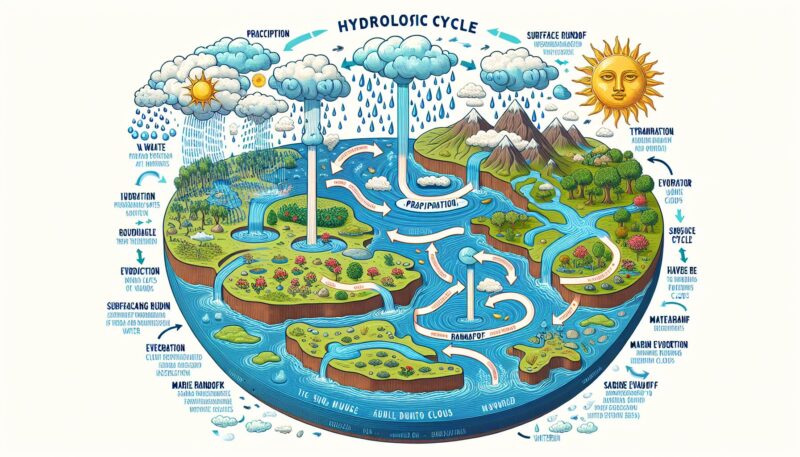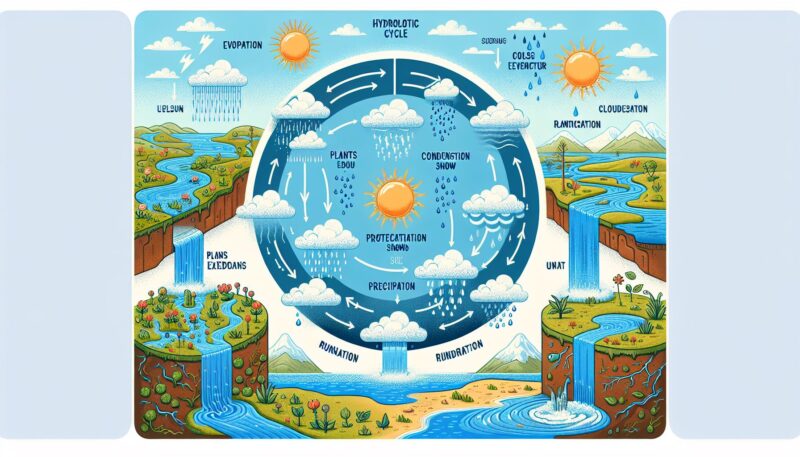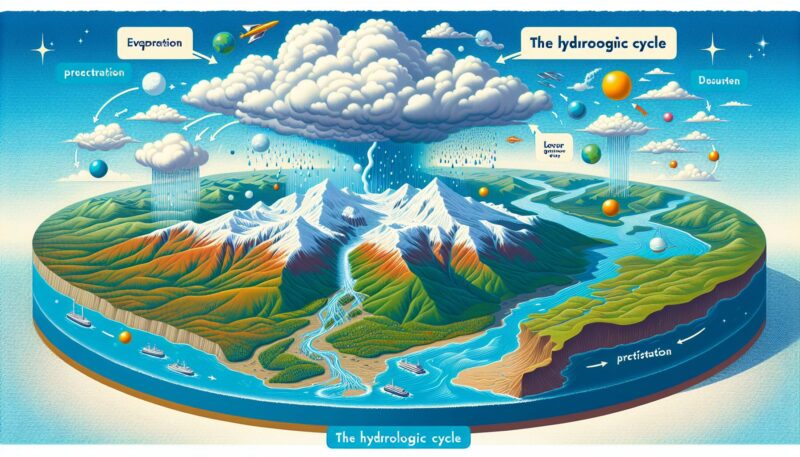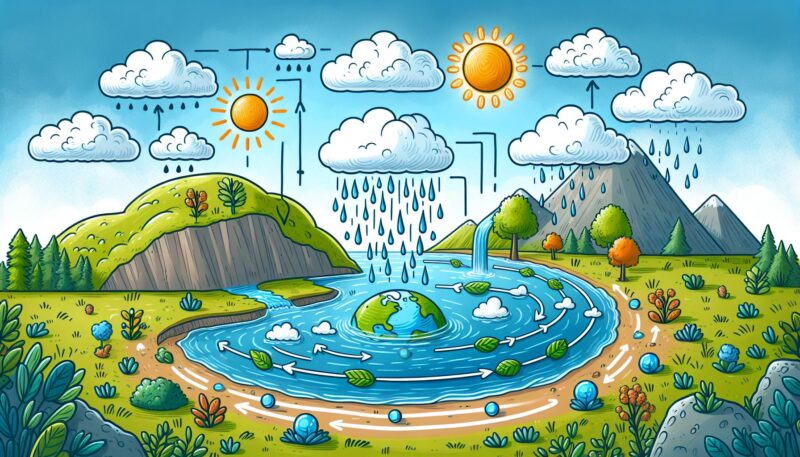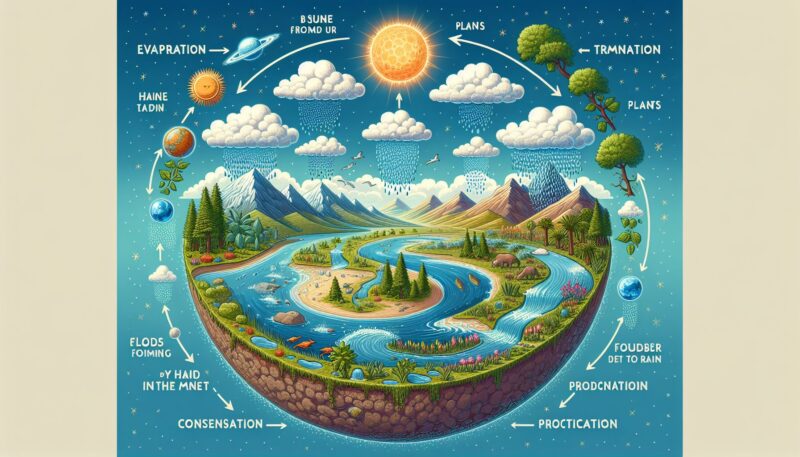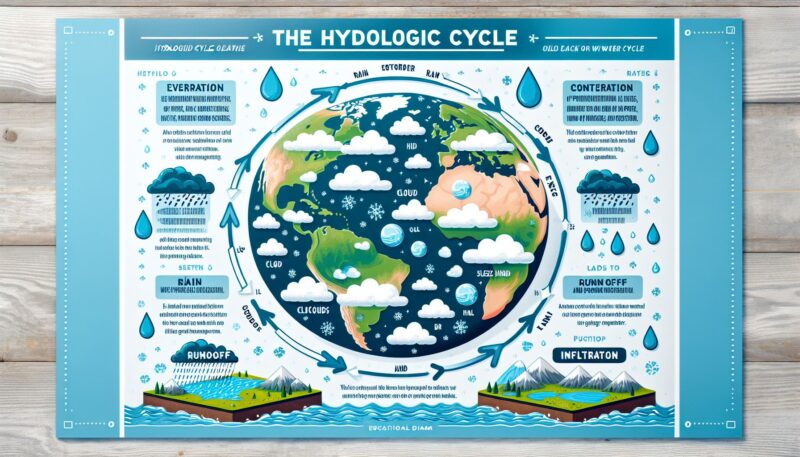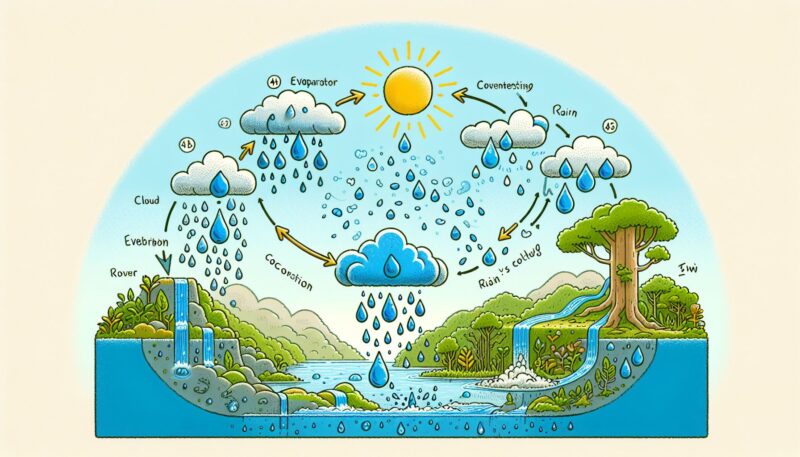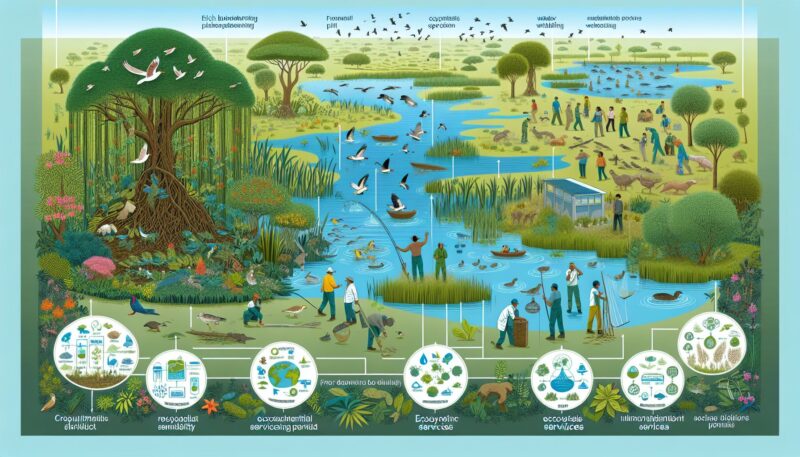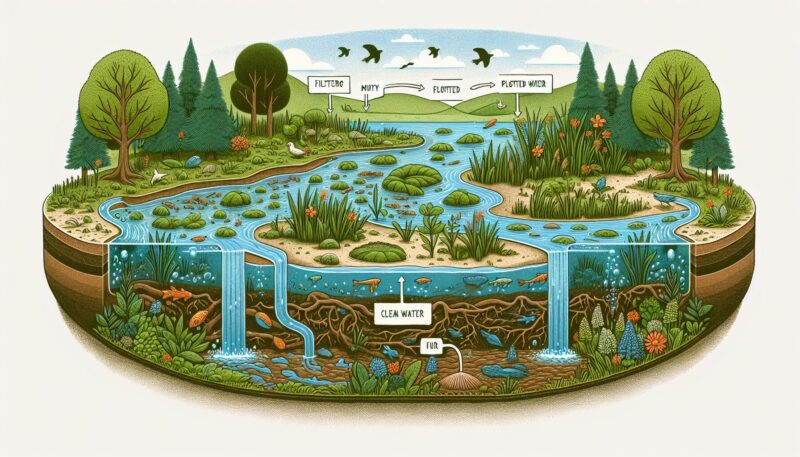Water is the lifeblood of our planet, a crucial resource for all forms of life. It is constantly on the move, cycling through states and locations, from the depths of the ocean to the peaks of mountains. This natural circulation of water is known as the hydrologic cycle, and it plays a key role in shaping our environment and sustaining life. In this article, we’ll delve into the secrets of the hydrologic cycle, exploring its components and their interconnected roles in the Earth’s complex water system.
Understanding the Hydrologic Cycle
At its core, the hydrologic cycle is the continuous movement of water on, above, and below the Earth’s surface. It’s a complex, never-ending loop that involves various processes such as evaporation, transpiration, condensation, precipitation, and runoff.
Evaporation and Transpiration
The journey of a water molecule often begins in the vast expanse of the oceans, where solar energy heats the surface, causing water to evaporate into the air. This invisible vapor rises into the atmosphere, where cooler temperatures eventually cause it to condense and form clouds.
On land, plants also contribute to the cycle through a process known as transpiration. They draw up groundwater through their roots and release water vapor into the atmosphere from their leaves. Combined with evaporation from soil and other surfaces, this plant-based water loss is a significant part of the hydrologic cycle and is often referred to as evapotranspiration.
Condensation
As the water vapor cools and condenses in the atmosphere, it creates what we recognize as clouds. These clouds, which are simply collections of tiny water droplets and ice crystals, are both a result of and a contributing factor to the planet’s weather patterns. They can drift for miles and serve as a global transport system for water.
Precipitation
Once the clouds are saturated with moisture, or when atmospheric conditions prompt their droplets to coalesce, precipitation occurs. This can take many forms, including rain, snow, sleet, or hail, depending on the temperature and atmospheric conditions. Precipitation is the primary mechanism through which water returns from the atmosphere to the Earth’s surface.
Runoff and Infiltration
Upon reaching the land, not all precipitation follows the same path. Some of it will be absorbed by the soil in a process called infiltration, contributing to groundwater levels. Excess water that doesn’t infiltrate, often due to ground saturation or impermeable surfaces, will travel over the surface as runoff. This runoff feeds into streams, rivers, and eventually back into the oceans, where the cycle can begin anew.
Percolation, Baseflow, and Groundwater
As water infiltrates the soil, it percolates deeper into the ground, replenishing aquifers—natural underground stores of freshwater. From these aquifers, water can flow slowly into streams and rivers, maintaining their levels even during dry periods. This component of streamflow, derived from groundwater, is termed baseflow.
The Role of Ice and Snow
In colder regions, water can be stored in the form of ice and snow, sometimes for prolonged periods. Glaciers and snowpacks act as freshwater reservoirs, releasing water slowly through melting during warmer seasons. This meltwater contributes to river flow and can be a critical source of water for downstream ecosystems and human uses.
The Impact of the Hydrologic Cycle on the Environment
The hydrologic cycle is a primary driver of the Earth’s climate and weather systems. It regulates temperature, shapes landscapes, supports diverse ecosystems, and sustains agriculture. Moreover, the distribution of freshwater across the globe is inherently linked to the cycle, which has profound implications for human societies and natural habitats.
Water Quality and Pollution
As water travels through the hydrologic cycle, it can pick up pollutants from the air, land, and human activities. The quality of water is therefore a crucial concern, affecting not only our environment but also our health and economies. Water pollution, eutrophication from excess nutrients, algal blooms, and the presence of pathogens or toxic substances like heavy metals, microplastics, and chemicals are some of the challenges faced in water management.
Water Treatment and Conservation
As the human population grows and the demand for clean water increases, efforts to manage and purify water supplies have become more critical. Water treatment processes such as filtration, disinfection, chlorination, and more advanced techniques like reverse osmosis and UV irradiation are employed to ensure safe water for consumption and use.
Water conservation strategies are equally important. They include practices like rainwater harvesting, greywater reuse, and reducing overall water footprints to help maintain a sustainable balance in the hydrologic cycle. Awareness of virtual water—the water used in the production of goods and services—is also growing as a means to encourage more responsible consumption patterns.
The Global Importance of the Hydrologic Cycle
The hydrologic cycle connects all regions of the world, making it a global system with local consequences. Water scarcity, droughts, and floods are all manifestations of the cycle’s variability. Understanding and managing the hydrologic cycle is, therefore, a matter of both local and international concern, affecting water security, agriculture, industry, and ecosystems around the world.
Climate Change and the Hydrologic Cycle
The impacts of climate change on the hydrologic cycle are of particular concern, as they can lead to alterations in the distribution and intensity of precipitation, increased evaporation rates, and changes in snow and ice dynamics. These in turn can affect the availability and quality of water resources, with wide-reaching effects on human societies and the natural world.
Conclusion
The hydrologic cycle is an incredible natural process, fundamental to the existence of life and the maintenance of our environment. It is both robust and fragile, capable of supporting vast ecosystems and civilizations, yet vulnerable to our actions and the changing climate. As stewards of this Earth, it is our responsibility to understand and protect the hydrologic cycle, ensuring that it continues to sustain life for generations to come.
Understanding the endless journey of a single water molecule through the hydrologic cycle deepens our appreciation for this vital system and underscores the need for careful management of our planet’s most precious resource.
Sources
- National Oceanic and Atmospheric Administration (NOAA) – The Water Cycle
- United States Geological Survey (USGS) – The Water Cycle
